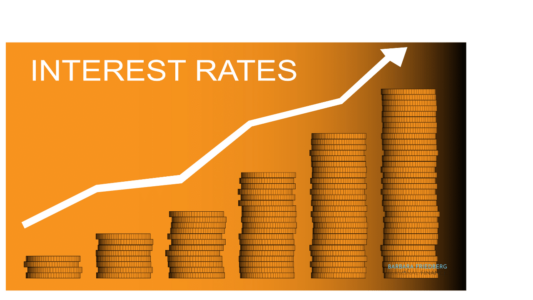In the world of investing, how interest rates affect investment strategies ? Interest rates are the unseen force—the tide that can lift portfolios or leave them stranded. Whether you’re managing your own money or watching financial news from the sidelines, there’s no escaping the influence of central banks. And in 2025, after years of low-rate policies followed by aggressive hikes, the rules of investing are being rewritten.
From shifting bond yields to recalibrated stock valuations, rising interest rates are reshaping strategies across the board. Savvy investors are adapting, while those stuck in pre-2022 playbooks are learning hard lessons.
So what’s really happening? how interest rates affect investment strategies ? And how should you respond?
Let’s break it down.
Why Interest Rates Matter So Much
Interest rates, especially the federal funds rate in the U.S. (or equivalent rates elsewhere), determine the cost of borrowing across the economy. These rates influence everything from:
- Mortgage and loan interest
- Corporate borrowing costs
- Consumer spending habits
- Bond yields and stock valuations
When rates rise, money becomes more expensive, borrowing slows, and economic activity cools. But the implications for investors are even more layered.
Think of it this way: Interest rates are the gravity of the financial universe. When gravity strengthens (rates rise), risk assets struggle to soar. When it weakens (rates fall), even speculative bets can float.
The Shift: From Risk-On to Risk-Conscious
For over a decade, low interest rates made growth stocks, speculative tech, and crypto assets the darlings of the market. Investors poured into anything with momentum, betting on future potential over present profit.
But that’s changed.
1. Growth Stocks Lose Their Shine
High interest rates mean future earnings are discounted more heavily. That hits growth stocks hard—especially those with long timelines before profitability. Sectors like tech, biotech, and green energy, once dominant, have seen more volatility as capital rotates toward stability.
2. Value Investing Makes a Comeback
With growth under pressure, investors are returning to fundamentals. Companies with strong balance sheets, reliable dividends, and consistent earnings are back in favor. Energy, industrials, and financials are enjoying renewed attention.
“Cash is no longer trash,” says veteran fund manager Lillian Reaves. “We’re in a yield-conscious world now, and fundamentals matter again.”
Bonds Are Back — But Not All Bonds Are Equal
For years, bonds offered paltry returns. Investors chasing yield had no choice but to venture into riskier assets.
Now? Fixed income is finally living up to its name.
Higher interest rates mean:
- Treasuries and high-grade corporate bonds offer attractive yields.
- Short-term instruments like money market funds and CDs provide decent returns with low risk.
- Bond laddering strategies are more viable, allowing investors to balance risk and income over time.
However, not all bonds benefit equally. Long-duration bonds are more sensitive to rate hikes and can suffer significant price declines as yields rise. In contrast, short- and medium-term bonds offer better protection in a rising rate environment.
Real Estate and REITs: Rethinking the “Safe” Investment
Real estate investment trusts (REITs) and physical property investors are also feeling the impact.
Rising rates mean:
- Higher mortgage costs, reducing property affordability.
- Lower profit margins for leveraged real estate ventures.
- Cap rate compression, forcing reevaluation of asset values.
While some sectors of real estate (like logistics and data centers) remain resilient, residential and commercial properties in overvalued markets may see sustained correction. Investors are advised to focus on quality, location, and long-term demand trends rather than speculative appreciation.
The Dollar, Commodities, and Global Diversification
Interest rates also affect currency values. As U.S. interest rates climb, the dollar often strengthens—drawing foreign capital and impacting global markets.
Here’s how this plays out:
- A stronger dollar reduces the value of international investments for U.S.-based investors.
- Emerging markets face capital flight as investors seek safer, higher-yielding U.S. assets.
- Commodity prices (especially gold and oil) are pressured by dollar strength and rate volatility.
This makes global diversification more complex, but also more necessary. Currency hedging, selective country exposure, and tactical asset allocation are key for international strategies in this rate-sensitive environment.
The Rise of Alternative Investments
With traditional stock-bond allocations underperforming or facing volatility, many investors are turning to alternatives:
- Private equity and venture capital, for long-term growth
- Hedge funds, for hedging and non-correlated returns
- Infrastructure and farmland, as inflation-resistant assets
- Precious metals, especially gold, as a store of value
However, these alternatives often come with higher fees, lower liquidity, and complexity. They’re not for everyone, but in a rate-sensitive world, they can play a strategic role in a well-diversified portfolio.
What Should Investors Do Now?
Rising interest rates are here to stay—at least in the near term. Inflation remains sticky, central banks are cautious, and the low-rate environment of the 2010s isn’t returning anytime soon. And how interest rates affect investment strategies ?
Here are key takeaways for forward-looking investors:
✔ Reassess Your Risk Tolerance
What worked in a zero-rate world may not work today. Rebalance toward income-generating, resilient assets.
✔ Embrace Fixed Income Again
Don’t underestimate the power of bonds. Short- and intermediate-term instruments can offer steady income and reduce volatility.
✔ Be Selective with Growth
Growth stocks aren’t dead—but valuation matters now. Look for profitability, not just potential.
✔ Diversify Globally and Strategically
Don’t abandon global exposure, but be smart about region and currency risks. Consider hedging where appropriate.
✔ Don’t Chase Yesterday’s Winners
Avoid anchoring your strategy to past bull markets. The macro environment has changed—so should your tactics.
Final Thoughts: A Rate-Raised Reality Check
The era of “free money” is behind us, and the investment landscape has shifted accordingly. But with change comes opportunity—and those who adapt stand to gain the most.
Interest rates are not simply numbers on a chart. They represent the cost of time, the price of risk, and the pulse of the economy. Understanding their impact isn’t just for economists or Wall Street pros—it’s essential knowledge for any investor in 2025 and beyond.
Because when the tide goes out, as Warren Buffett once said, you find out who’s been swimming naked.
In this new high-rate world, make sure your portfolio is fully dressed.







